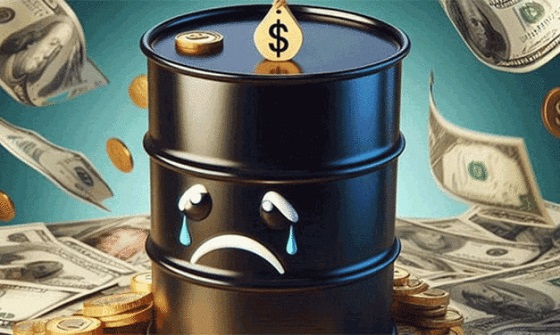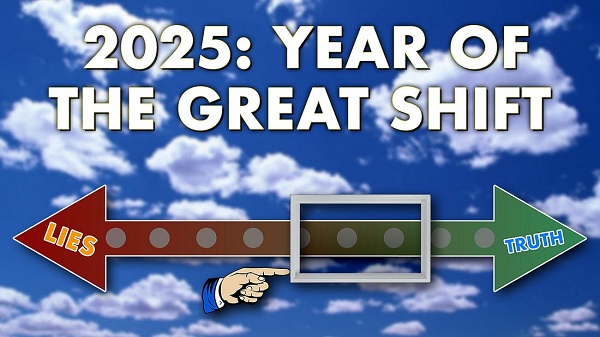Energy
Canada could have been an energy superpower. Instead we became a bystander

This article was originally published in a collected volume, Canada’s Governance Crisis, which outlines Canada’s policy paralysis across a wide range of government priorities. Read the full paper here.
From the MacDonald-Laurier Institute
By Heather Exner-Pirot
Government has imposed a series of regulatory burdens on the energy industry, creating confusion, inefficiency, and expense
Oil arguably remains the most important commodity in the world today. It paved the way for the industrialization and globalization trends of the post-World War II era, a period that saw the fastest human population growth and largest reduction in extreme poverty ever. Its energy density, transportability, storability, and availability have made oil the world’s greatest source of energy, used in every corner of the globe.
There are geopolitical implications inherent in a commodity of such significance and volume. The contemporary histories of Russia, Iran, Venezuela, Saudi Arabia, and Iraq are intertwined with their roles as major oil producers, roles that they have used to advance their (often illiberal) interests on the world stage. It is fair to ask why Canada has never seen fit to advance its own values and interests through its vast energy reserves. It is easy to conclude that its reluctance to do so has been a major policy failure.
Canada has been blessed with the world’s third largest reserves of oil, the vast majority of which are in the oil sands of northern Alberta, although there is ample conventional oil across Western Canada and offshore Newfoundland and Labrador as well. The oil sands contain 1.8 trillion barrels of oil, of which just under 10 percent, or 165 billion barrels, are technically and economically recoverable with today’s technology. Canada currently extracts over 1 billion barrels of that oil each year.
The technology necessary to turn the oil sands into bitumen that could then be exported profitably really took off in the early 2000s. Buoyed by optimism of its potential, then Prime Minister Stephen Harper pronounced in July 2006 that Canada would soon be an “energy superproducer.” A surge of investment came to the oil sands during the commodity supercycle of 2000-2014, which saw oil peak at a price of $147/barrel in 2008. For a few good years, average oil prices sat just below $100 a barrel. Alberta was booming until it crashed.
Two things happened that made Harper’s prediction fall apart. The first was the shale revolution – the combination of hydraulic fracturing and horizontal drilling that made oil from the vast shale reserves in the United States economical to recover. Until then, the US had been the world’s biggest energy importer. In 2008 it was producing just 5 million barrels of crude oil a day, and had to import 10 million barrels a day to meet its ravenous need. Shale changed that, and the US is now the world’s biggest oil producer, expecting to hit a production level of 12.4 million barrels a day in 2023.
For producers extracting oil from the oil sands, the shale revolution was a terrible outcome. Just as new major oil sands projects were coming online and were producing a couple of million barrels a day, our only oil customer was becoming energy self-sufficient.
Because the United States was such a reliable and thirsty oil consumer, it never made sense for Canada to export its oil to any other nation, and the country never built the pipeline or export terminal infrastructure to do so. Our southern neighbour wanted all we produced. But the cheap shale oil that flooded North America in the 2010s made that dependence a huge mistake as other markets would have proven to be more profitable.
If shale oil took a hatchet to the Canadian oil industry, the election of the Liberals in 2015 brought on its death by a thousand cuts. For the last eight years, federal policies have incrementally and cumulatively damaged the domestic oil and gas sector. With the benefit of hindsight in 2023, it is obvious that this has had major consequences for global energy security, as well as opportunity costs for Canadian foreign policy.
Once the shale revolution began in earnest, the urgency in the sector to be able to export oil to any other market than the United States led to proposals for the Northern Gateway, Energy East, and TMX pipelines. Opposition from Quebec and BC killed Energy East and Northern Gateway, respectively. The saga of TMX may finally end this year, as it is expected to go into service in late 2023, billions of dollars over cost and years overdue thanks to regulatory and jurisdictional hurdles.
Because Canada has been stuck selling all of its oil to the United States, it does so at a huge discount, known as a differential. That discount hit a staggering US$46 per barrel difference in October 2018, when WTI (West Texas Intermediate) oil was selling for $57 a barrel, but we could only get $11 for WCS (Western Canada Select). The lack of pipelines and the resulting differential created losses to the Canadian economy of $117 billion between 2011 and 2018, according to Frank McKenna, former Liberal New Brunswick Premier and Ambassador to the United States, and now Deputy Chairman of TD Bank.
The story is not dissimilar with liquefied natural gas (LNG). While both the United States and Canada had virtually no LNG export capacity in 2015, the United States has since grown to be the world’s biggest LNG exporter, helping Europe divest itself of its reliance on Russian gas and making tens of billions of dollars in the process. Canada still exports none, with regulatory uncertainty and slow timelines killing investor interest. In fact, the United States imports Canadian natural gas – which it buys for the lowest prices in the world due to that differential problem – and then resells it to our allies for a premium.
Canada’s inability to build pipelines and export capacity is a major problem on its own. But the federal government has also imposed a series of regulatory burdens and hurdles on the industry, one on top of the other, creating confusion, inefficiency, and expense. It has become known in Alberta as a “stacked pancake” approach.
The first major burden was Bill C-48, the tanker moratorium. In case anyone considered reviving the Northern Gateway project, the Liberal government banned oil tankers from loading anywhere between the northernmost point of Vancouver Island to the BC-Alaska border. That left a pathway only for TMX, which goes through Vancouver, amidst fierce local opposition. I have explained it to my American colleagues this way: imagine if Texas was landlocked, and all its oil exports had to go west through California, but the federal government banned oil tankers from loading anywhere on the Californian coast except through ports in San Francisco. That is what C-48 did in Canada.
Added to Bill C-48 was Bill C-69, known colloquially as the “no new pipelines” bill and now passed as the Impact Assessment Act, which has successfully deterred investment in the sector. It imposes new and often opaque regulatory requirements, such as having to conduct a gender-based analysis before proceeding with new projects to determine how different genders will experience them: “a way of thinking, as opposed to a unique set of prescribed methods,” according to the federal government. It also provides for a veto from the Environment and Climate Change Canada Minister – currently, Steven Guilbeault – on any new in situ oil sands projects or interprovincial or international pipelines, regardless of the regulatory agency’s recommendation.
The Alberta Court of Appeal has determined that the act is unconstitutional, and eight other provinces are joining in its challenge. But so far it is the law of the land, and investors are allergic to it.
Federal carbon pricing, and Alberta’s federally compatible alternative for large emitters, the TIER (Technology Innovation and Emissions Reduction) Regulation, was added next, though this regulation makes sense for advancing climate goals. It is the main driver for encouraging emission reductions, and includes charges for excess emissions as well as credits for achieving emissions below benchmark. It may be costly for producers, but from an economic perspective, of all the climate policies carbon pricing is the most efficient.
Industry has committed to their shareholders that they will reduce emissions; their social license and their investment attractiveness depends to some degree on it. The major oil sands companies have put forth a credible plan to achieve net zero emissions by 2050. One conventional operation in Alberta is already net zero thanks to its use of carbon capture technology. Having a predictable and recognized price on carbon is also providing incentives to a sophisticated carbon tech industry in Canada, which can make money by finding smart ways to sequester and use carbon.
In theory, carbon pricing should succeed in reducing emissions in the most efficient way possible. Yet the federal government keeps adding more policies on top of carbon pricing. The Canadian Clean Fuel Standard, introduced in 2022, mandates that fuel suppliers must lower the “lifecycle intensity” of their fuels, for example by blending them with biofuels, or investing in hydrogen, renewables, and carbon capture. This standard dictates particular policy solutions, causes the consumer price of fuels to increase, facilitates greater reliance on imports of biofuels, and conflicts with some provincial policies. It is also puts new demands on North American refinery capacity, which is already highly constrained.
The newest but perhaps most damaging proposal is for an emissions cap, which seeks to reduce emissions solely from the oil and gas sector by 42 percent by 2030. This target far exceeds what is possible with carbon capture in that time frame, and can only be achieved through a dramatic reduction in production. The emissions cap is an existential threat to Canada’s oil and gas industry, and it comes at a time when our allies are trying, and failing, to wean themselves off of Russian oil. The economic damage to the Canadian economy is hard to overestimate.
Oil demand is growing, and even in the most optimistic forecasts it will continue to grow for another decade before plateauing. Our European and Asian allies are already dangerously reliant on Russia and Middle Eastern states for their oil. American shale production is peaking, and will soon start to decline. Low investment levels in global oil exploration and production, due in part to ESG (environmental, social, and governance) and climate polices, are paving the way for shortages by mid-decade.
An energy crisis is looming. Canada is not too late to be the energy superproducer the democratic world needs in order to prosper and be secure. We need more critical minerals, hydrogen, hydro, and nuclear power. But it is essential that we export globally significant levels of oil and LNG as well, using carbon capture, utilization, and storage (CCUS) wherever possible.
Meeting this goal will require a very different approach than the one currently taken by the federal government: it must be an approach that encourages growth and exports even as emissions are reduced. What the government has done instead is deter investment, dampen competitiveness, and hand market share to Russia and OPEC.
Heather Exner-Pirot is Director of Energy, Natural Resources and Environment at the Macdonald-Laurier Institute.
Energy
75 per cent of Canadians support the construction of new pipelines to the East Coast and British Columbia

-
71 per cent of Canadians find the approval process too long.
-
67 per cent of Quebecers support the Marinvest Energy natural gas project.
“While there has always been a clear majority of Canadians supporting the development of new pipelines, it seems that the trade dispute has helped firm up this support,” says Gabriel Giguère, senior policy analyst at the MEI. “From coast to coast, Canadians appreciate the importance of the energy industry to our prosperity.”
Three-quarters of Canadians support constructing new pipelines to ports in Eastern Canada or British Columbia in order to diversify our export markets for oil and gas.
This proportion is 14 percentage points higher than it was last year, with the “strongly agree” category accounting for almost all of the increase.
For its part, Marinvest Energy’s natural gas pipeline and liquefaction plant project, in Quebec’s North Shore region, is supported by 67 per cent of Quebecers polled, who see it as a way to reduce European dependence on Russian natural gas.
Moreover, 54 per cent of Quebecers now say they support the development of the province’s own oil resources. This represents a six-point increase over last year.
“This year again, we see that this preconceived notion according to which Quebecers oppose energy development is false,” says Mr. Giguère. “Quebecers’ increased support for pipeline projects should signal to politicians that there is social acceptability, whatever certain lobby groups might think.”
It is also the case that seven in ten Canadians (71 per cent) think the approval process for major projects, including environmental assessments, is too long and should be reformed. In Quebec, 63 per cent are of this opinion.
The federal Bill C-5 and Quebec Bill 5 seem to respond to these concerns by trying to accelerate the approval of certain large projects selected by governments.
In July, the MEI recommended a revision of the assessment process in order to make it swift by default instead of creating a way to bypass it as Bill C-5 and Bill 5 do.
“Canadians understand that the burdensome assessment process undermines our prosperity and the creation of good, well-paid jobs,” says Mr. Giguère. “While the recent bills to accelerate projects of national interest are a step in the right direction, it would be better simply to reform the assessment process so that it works, rather than creating a workaround.”
A sample of 1,159 Canadians aged 18 and older were surveyed between November 27 and December 2, 2025. The results are accurate to within ± 3.5 percentage points, 19 times out of 20.
Business
Geopolitics no longer drives oil prices the way it used to

This article supplied by Troy Media.
Oil markets are shrugging off war and sanctions, a sign that oversupply now matters more than disruption
Oil producers hoping geopolitics would lift prices are running into a harsh reality. Markets are brushing off wars and sanctions as traders focus instead on expectations of a deep and persistent oil glut.
That shift was evident last week. Despite several geopolitical developments that would once have pushed prices higher, including the U.S. seizure of a Venezuelan crude tanker and fresh Ukrainian strikes on Russian energy infrastructure, oil markets barely reacted, with prices ending the week lower.
Brent crude settled Friday at US$61.12 a barrel and U.S. West Texas Intermediate at US$57.44, capping a weekly drop of more than four per cent.
Instead of responding to disruption headlines, markets were reacting to a different risk. Bearish sentiment, rather than geopolitics, continued to dominate as expectations of a “2026 glut” took centre stage.
At the heart of that outlook is a growing supply overhang. The oil market is grappling with whether sanctioned Russian and Iranian cargoes should still be counted as supply. That uncertainty helps explain why prices have been slow to react to a glut that is already forming on the water, said Carol Ryan, writing for The Wall Street Journal.
The scale of that buildup is significant. There are 1.4 billion barrels of oil “on the water,” 24 per cent higher than the average for this time of year between 2016 and 2024, according to oil analytics firm Vortexa. These figures capture shipments still in transit or cargoes that have yet to find a buyer, a clear sign that supply is running ahead of immediate demand.
Official forecasts have reinforced that view. Last week, the International Energy Agency trimmed its projected 2026 surplus to 3.84 million barrels per day, down from 4.09 million barrels per day projected previously. Even so, the IEA still sees a large oversupply relative to global demand.
Demand growth offers little relief. The IEA expects growth of 830 kb/d (thousand barrels per day) in 2025 and 860 kb/d in 2026, with petrochemical feedstocks accounting for a larger share of incremental demand. That pace remains modest against the volume of supply coming to market.
OPEC, however, has offered a different assessment. In its latest report, the group pointed to a near balance, forecasting demand for OPEC+ crude averaging about 43 million barrels per day in 2026, roughly in line with what it produced in November.
Reflecting that confidence. OPEC+ kept policy steady late in November, pausing planned output hikes for the first quarter of 2026 while more than three million barrels per day of cuts remain in place. Those measures are supportive in theory, but markets have shown little sign of being persuaded.
Recent geopolitical events underline that scepticism. The ongoing Russia-Ukraine war and Ukrainian strikes on Russian energy infrastructure, including reported hits on facilities such as the Slavneft-YANOS refinery in Yaroslavl, again failed to lift prices. Russia-Ukraine headlines pulled prices down more than strikes lifted them, according to media reports, suggesting traders were more attuned to “peace deal” risk than to supply disruption.
Washington’s move against Venezuelan crude shipments offered another test. The U.S. seizure of a Venezuelan tanker, the first formal seizure under the 2019 sanctions framework, had a muted price impact, writes Marcin Frackiewicz of Oilprice.com.
Venezuela’s exports fell sharply in the days that followed, but markets remained largely unmoved. One explanation is that Venezuela’s output is no longer large enough to tighten global balances the way it once did, and that abundant global supply has reduced the geopolitical premium.
Taken together, the signal is hard to miss. Oil producers, including in Canada, face a reality check in a market that no longer rewards headlines, only discipline and demand.
Toronto-based Rashid Husain Syed is a highly regarded analyst specializing in energy and politics, particularly in the Middle East. In addition to his contributions to local and international newspapers, Rashid frequently lends his expertise as a speaker at global conferences. Organizations such as the Department of Energy in Washington and the International Energy Agency in Paris have sought his insights on global energy matters.
Troy Media empowers Canadian community news outlets by providing independent, insightful analysis and commentary. Our mission is to support local media in helping Canadians stay informed and engaged by delivering reliable content that strengthens community connections and deepens understanding across the country.
-

 Health2 days ago
Health2 days agoFDA warns ‘breast binder’ manufacturers to stop marketing to gender-confused girls
-

 Business2 days ago
Business2 days agoTaxing food is like slapping a surcharge on hunger. It needs to end
-

 International2 days ago
International2 days ago2025: The Year The Narrative Changed
-

 Business1 day ago
Business1 day agoThere’s No Bias at CBC News, You Say? Well, OK…
-

 Uncategorized17 hours ago
Uncategorized17 hours agoMortgaging Canada’s energy future — the hidden costs of the Carney-Smith pipeline deal
-

 Health2 days ago
Health2 days agoAll 12 Vaccinated vs. Unvaccinated Studies Found the Same Thing: Unvaccinated Children Are Far Healthier
-

 Agriculture2 days ago
Agriculture2 days agoSupply Management Is Making Your Christmas Dinner More Expensive
-

 Daily Caller2 days ago
Daily Caller2 days agoTrump Reportedly Escalates Pressure On Venezuela With Another Oil Tanker Seizure











